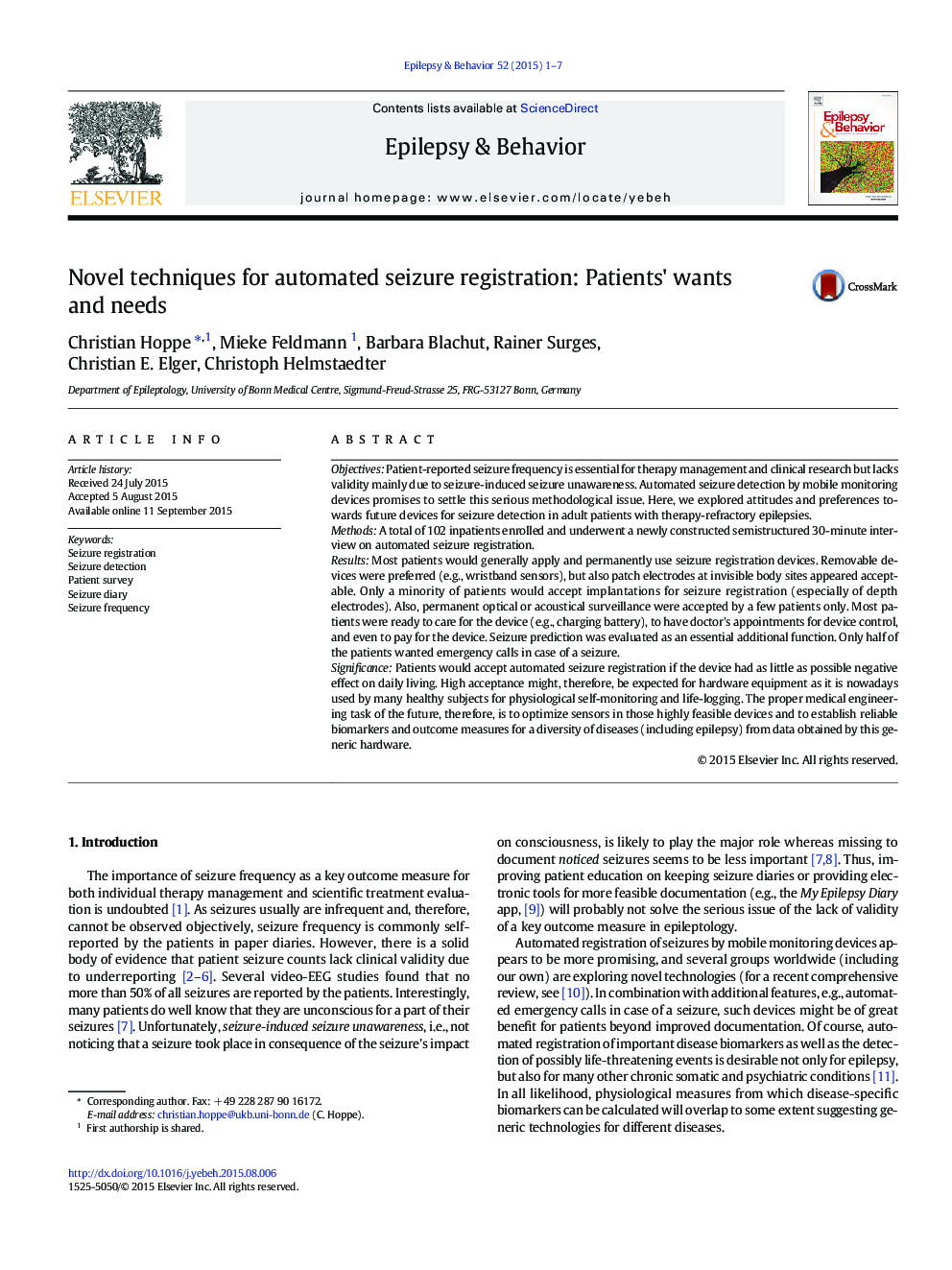| کد مقاله | کد نشریه | سال انتشار | مقاله انگلیسی | نسخه تمام متن |
|---|---|---|---|---|
| 6010362 | 1185876 | 2015 | 7 صفحه PDF | دانلود رایگان |
- Seizure unawareness threatens the validity of patient seizure counts.
- Novel mobile automated seizure registration devices might settle the issue.
- Most patients with therapy-refractory epilepsy would use seizure detection devices.
- Patients want removable sensors and an additional seizure prediction function.
- Hardware equipment used for self-monitoring in healthy subjects should be used.
ObjectivesPatient-reported seizure frequency is essential for therapy management and clinical research but lacks validity mainly due to seizure-induced seizure unawareness. Automated seizure detection by mobile monitoring devices promises to settle this serious methodological issue. Here, we explored attitudes and preferences towards future devices for seizure detection in adult patients with therapy-refractory epilepsies.MethodsA total of 102 inpatients enrolled and underwent a newly constructed semistructured 30-minute interview on automated seizure registration.ResultsMost patients would generally apply and permanently use seizure registration devices. Removable devices were preferred (e.g., wristband sensors), but also patch electrodes at invisible body sites appeared acceptable. Only a minority of patients would accept implantations for seizure registration (especially of depth electrodes). Also, permanent optical or acoustical surveillance were accepted by a few patients only. Most patients were ready to care for the device (e.g., charging battery), to have doctor's appointments for device control, and even to pay for the device. Seizure prediction was evaluated as an essential additional function. Only half of the patients wanted emergency calls in case of a seizure.SignificancePatients would accept automated seizure registration if the device had as little as possible negative effect on daily living. High acceptance might, therefore, be expected for hardware equipment as it is nowadays used by many healthy subjects for physiological self-monitoring and life-logging. The proper medical engineering task of the future, therefore, is to optimize sensors in those highly feasible devices and to establish reliable biomarkers and outcome measures for a diversity of diseases (including epilepsy) from data obtained by this generic hardware.
Journal: Epilepsy & Behavior - Volume 52, Part A, November 2015, Pages 1-7
